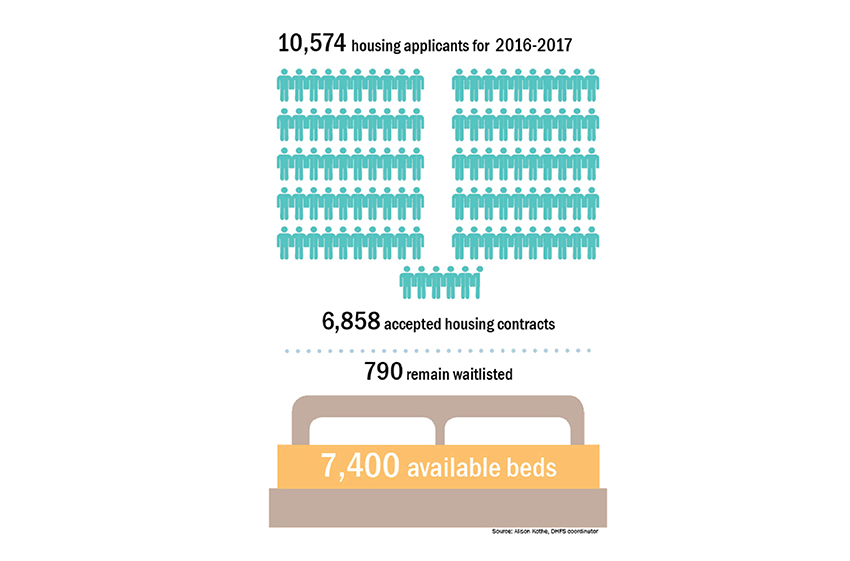Students in search of on-campus housing at the University are having an exceptionally difficult time doing so due to the high demand of students applying and a shortage of spaces.
In the 2016-2017 academic year, the University received 11,977 applications for on-campus housing with only 7,400 beds available, according to the Division of Housing and Food Services’ communications and marketing coordinator Alison Kothe. From those students that applied this year, 6,858 have accepted their housing contract and 790 are currently on the waitlist.
Although it’s known that spaces are limited and based off of a first-come-first-serve basis, students tend to apply for on-campus housing due to the convenience of living on campus.
“I wanted to live on campus because my parents and I felt it was the best way to transition into college and also to get a full experience my freshman year,” said incoming unspecified business freshman Sonia Oommen, who is staying on-campus her first year. “It’s also a great way for me to be close to everything happening on campus.”
To ensure the University was able to provide housing for everyone, applications for housing had to be submitted by May 4.
“The reason we did [the deadline] was simply because we saw how many students had already applied and how many students had already accepted our housing contract, and we didn’t want students to continue to apply for housing if it was not likely that we would reach them,” Kothe said.
Once the application is turned in and students receive their housing contract, another deadline is provided on the contract so that the University is able to keep account of how many students are planning on staying on campus.
Kothe also said the University offers supplemental housing in order to accommodate the vast number of students applying for dorms. Supplemental housing involves spaces in residence halls being converted to dorms that include the same furniture a regular dorm would have. If a low number of students apply to live on-campus and supplemental housing is not needed, those spaces are used as lounges for students.
“The great thing about having those types of spaces, is that in a year when we do have a lot of students who are wanting to live on campus, it gives us the ability to continue that on-campus housing experience,” Kothe said.
Although dorms are popular among incoming freshman, students tend to move off-campus after their first year due to the pricing of dorms. Visual art studies junior Tanya Gantiva, who lived at Jester her freshman year, said dorms provide a small room that students have to share, along with a meal plan that’s unhealthy for health-conscious people.
“On-campus housing in general was very expensive in comparison to off-campus housing,” Gantiva said. “Off campus, I have my own room, my own kitchen, living room, everything so it just seemed almost like, ‘why would you live on campus?’”
Kothe said the pricing for on-campus housing varies depending upon the services the University provides that academic year.
“Every year the University along with the Division of Student Affairs will look at the pricing of all of the services on campus and some years there’s a price change and some years there’s not,” Kothe said. “This year the main type of room we have on campus, which is a shared room with community bath, that price this year will be $10,223 that includes the meal plan, taxes and everything. Last year that type of space was $9,714.”





















